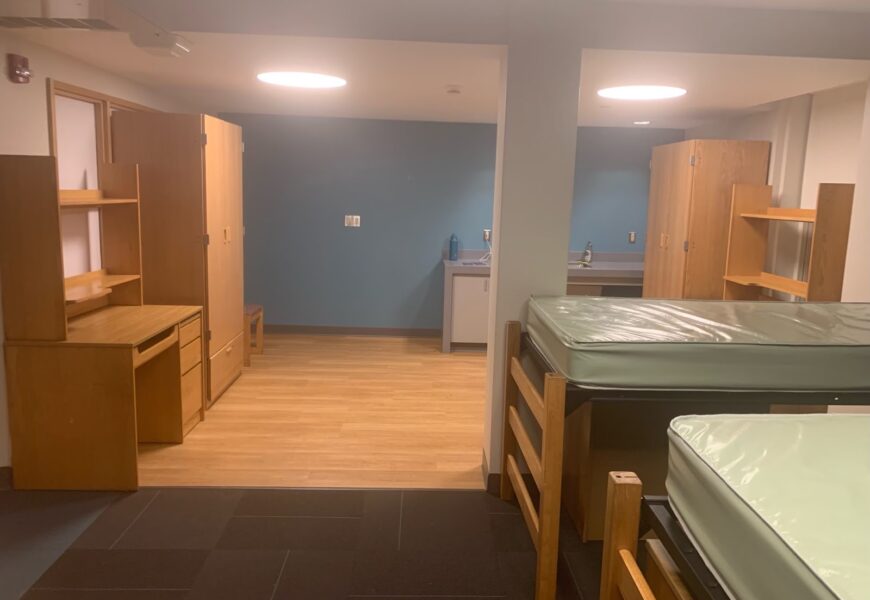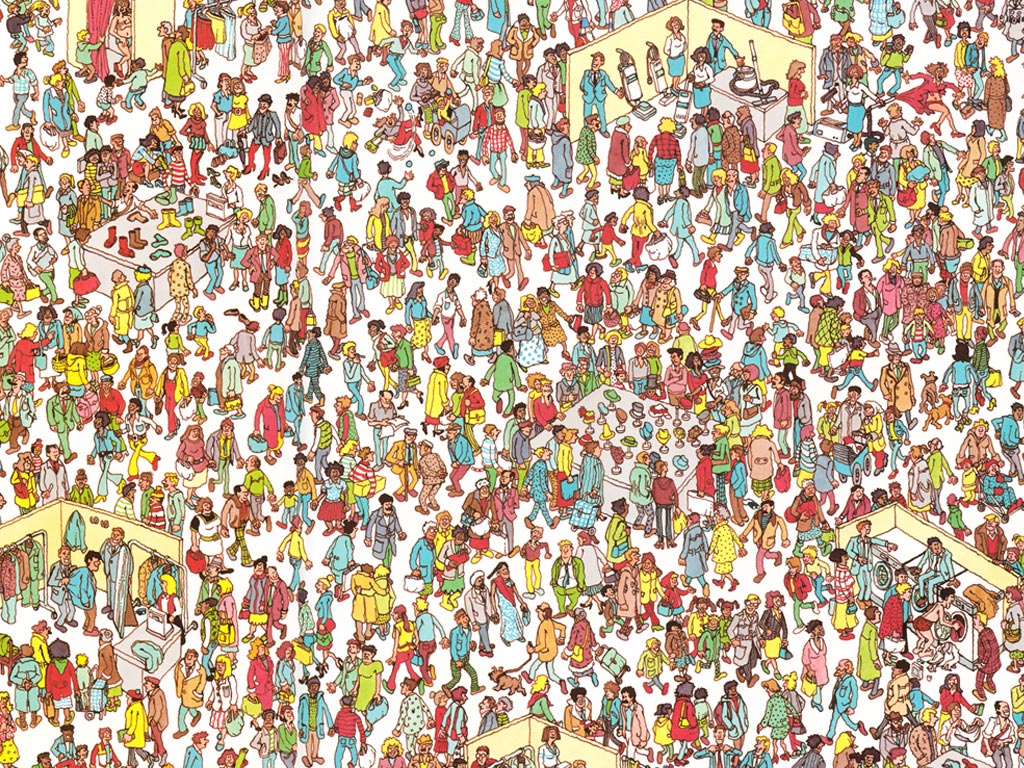An unprecedented 635 first-year and 20 transfer students arrived on Connecticut College’s campus on Aug. 23. These bright-eyed and bushy-tailed students moved in expecting spacious rooms with windows aplenty. Instead, many found themselves hauling their mini fridges down to a windowless basement or trying to sneak them past the four other roommates they shared a cramped space with. Some were lucky, discovering that their space was a converted common room or perhaps even a converted dining room, but such experiences were few and
far between.
First-year Emma Linder’s converted common room in Hamilton is spacious. With a television and sink, Linder is pleased with her room. It can easily accommodate her and her two roommates. Matthew Fuentes ‘26 had a completely different experience. He and his roommates were packed into a forced Johnson triple, so close together that the beds touch. Fuentes explained, “When one person is awake and walking around, everyone else is.”
Such an influx of students also creates issues in the classroom. General Chemistry, a course usually capped at 168 students between two sections, is now at 182. The General Chemistry Lab that used to be weekly is now bi-weekly to accommodate the number of students taking the course. Across its seven sections, the lab is overenrolled by an aggregate of 17 students.
Emily Fairfield ‘26 takes General Chemistry and said that every seat is taken.
Fairfield explained that hands-on learning is “critical” and the bi-weekly schedule
seriously cuts down opportunities for lab time. Fairfield added, “We are supposed
to have two and a half hours per week in the lab; that’s what it’s been in years past.”
Students still get two and a half hours of lab time, but it is now every other week.
Fuentes is taking Computer Science and described his class as “filled to the brim.”
Fuentes’ other courses only have one or two seats remaining in each.
Chemistry and Computer Science aren’t the only departments struggling with over enrollment. American Sign Language (ASL) classes are also very high in demand, forcing the department to expand and making it difficult for students to get into classes. Emma Steel ‘26 was fortunate enough to get into Elementary ASL, a course she was eager to take. Steel explained, “ASL was the first class that I tried to enroll in and it was gone in seconds.” Despite her full list of backup courses, she was still not able to get into any of the other classes she had planned to take.
Sabrina Malec ‘26 was keen on taking Chinese, but classes filled up before they could even register. “I got into zero of the classes I wanted. My first choice and all my backups were full,” Malec expressed. For Malec’s Chinese class, the cap was 18 people and in order to get into it, they had to email the professor who provided an override. The class ended up overflowing; Malec added, “The 18 person class turned into 23.”
Getting into these overcrowded courses was half the battle. Armed and ready with backups and course registration numbers (CRNs) memorized, first-years competed to get into classes. Taylor Knott ‘26 was stuck in Fanning Hall for over an hour inputting CRNs, desperately trying to find backups for the carefully selected courses she didn’t get into. Knott said, “I got one of the six classes I wanted.” The classes Knott intended to take filled up immediately, and the ones in which she ended up had 20 more students than they were supposed to. Fortunately, Knott was able to get into some courses by emailing professors.
A few seats over in Fanning, Hannah Treiber ‘26 and Steel were scouring the dynamic schedule for anything that sounded interesting. Treiber’s experiences with overcrowding didn’t stop there; Treiber also ended up living in a converted dining room with five other roommates in Knowlton when she requested a double. Though neither Treiber nor her roommates requested such an arrangement, she enjoys the set-up. Treiber said “We have our own spaces and then a common area we’ll all hangout in.”
At the college’s welcome assembly on Aug. 23, President Katherine Bergeron addressed new camels and their families, citing that the Class of 2026 was among the most diverse in the college’s history. Bergeron said, “24% are domestic students of color and 5% are international students.” Bergeron added that the incoming class is composed of students from 36 states and 23 countries. 82 members of the Class of 2026 are first generation college students as well.
However frustrating the overcrowding may be when it comes to dorms and classrooms, it fuels camaraderie, builds on diversity, and bolsters club involvement. The opportunity for so many students to mingle across class years, backgrounds, and disciplines, and create new relationships enables the college to facilitate an even richer, more diverse community.











Wouldn’t the removal of common rooms inhibit the development of camaraderie? If the rooms are so tight where can students hang out in the dormitories?